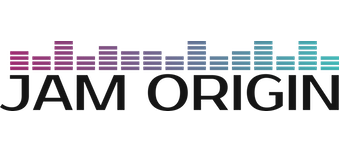I made the experience that with 128 samples the latency went down in comparison to 64 > especially for low frequent notes. But in general on my systems I’m also around 20-25 ms and can easy live with that.
Thank you I will try it. 128 is the border value where I start to feel the latency on my guitar setup with 48kHz.
Do you use MG standalone or in a DAW? If DAW, which one?
Most of the time I use MG3 as plugin in Cubase 14 Pro.
i experimented with 64 vs 128 last night and found a 4-5 ms improvement in the low notes. but the high notes were slower, by 3-4 ms.
i can’t think of a reason this might be. i wasn’t being terribly methodical though, i only did two passes.
@JamO the yamaha/axon supposedly delivers an average of less than 12msec latency across all strings. do you think those numbers are accurate? how do you think they achieved this?
(The original post here was about MGs polyphonic tracking, which is something entirely different than Axon/Yamaha. There is much more to tracking guitars than latency and pitch detection, and I wont go into details).
Axon was a hex system, and like all monophonic systems it’s simply, a search for repetitions in the waveform, and in the case of axon something marketed as “early transient response” which would use the first half-cycle of a period to determine the pitch. The approach was that it its the wrong note you can just turn it off again and trigger another one after a few more ms when you have better information…
In this monophonic case, you can basically trigger all the notes as fast as you want, but then a large fraction of them are just providing you senseless musical information to confuse the synth and without dynamics. Which works some types of synths and making sounds, but not a good solution now that we have neural networks and almost endless computational resources.
@JamO, the exciting question remains as to when the first transient of a played note is reliably recognized, and how much time passes in milliseconds, depending on the pitch, until the note is recognized by its pitch, as well as by its other various parameters.
The time from the first reliable transient recognition to the final decision of the acoustic / midi output of the tone as a whole could perhaps be shortened by the special manipulation of the inharmonic components in the initial phase, which then “deceives” the ear and fools the listener/player into believing a faster tone.
What I mean by this is that the ear, or even more so the brain, should be “permanent engaged” ![]() in the time interval between the first transient perceived as an attack and the final perception of the tone in order to perceive the early attack and the corresponding identified subsequent tone as a coherent acoustic event.
in the time interval between the first transient perceived as an attack and the final perception of the tone in order to perceive the early attack and the corresponding identified subsequent tone as a coherent acoustic event.
In the case of chords, too, the low notes are probably perceived first in terms of auditory psychology, although they have a longer attack time but probably fewer harmonics. This could perhaps also be taken into account in the initial phase of recognition.
Yes, those kinds of tricks can be used when you control the synths (such as the internal sounds of the Boss units). Thats why those “internal sounds” have less latency. In reality they are more like audio fx’s and has nothing to do with MIDI.
In MG you can add a Deep Expressor on a chain and set it to 100% transient. That will give you those transients with zero miliseconds of latency. On another chain you have a synth. Now you want to shape those transients using audio filters (lowpass) and audio fx (saturation). Ideally the transients needs to be morphed into the synth or virtual instrument to be perceived as coherent notes. But such morphing is not (yet) available in MG. In reality, it would probably entail an end-to-end training of a model for each particular guitar and synth-preset combination.
@JamO, I was mainly concerned here with non-tonal and tonal percussive sounds as individual tones as well as sustained percussive chords (e.g. hammond organ with sine click) and decaying percussive chords (e.g. guitar and piano-like sounds or pizzicato strings or funky brass) with different initial characteristics of their attack behaviour.
Would real time audio modelling including morphing when merging initial transient and synthesizer sounds perhaps be more effective than multiple real time training for each individual synthesizer preset/transient combination?
Could an ‘internal inspector’ be set up that analyses and classifies the character of the selected presets/patches/sounds for each chain separately in the background during configuration before playing, in order to make faster decisions for merging with the transients during playing? And store these decisions, including the necessary transformation, in a specially processed (possibly temporary) sample database, in which all transformed sounds are then already available for retrieval?
Another idea might be to use red or pink noise as a provisional audio fx between the first transient and the synthesiser sound to create coherence in the sound. This red or pink noise could probably be generated from the tones of the synthesiser sound scanned in advance by the ‘internal inspector’, i.e. the internal inspector ‘plays through’ the synthesiser sound once in advance in order to gain information for the noise signal.
Could not get it less than 25 ms in Logic, but for strings/pads it is more than enough -
The most important thing is that polyphonic tracking sounds rather musical, as if a keyboard player is playing together with you, peeping at your chords ![]()
